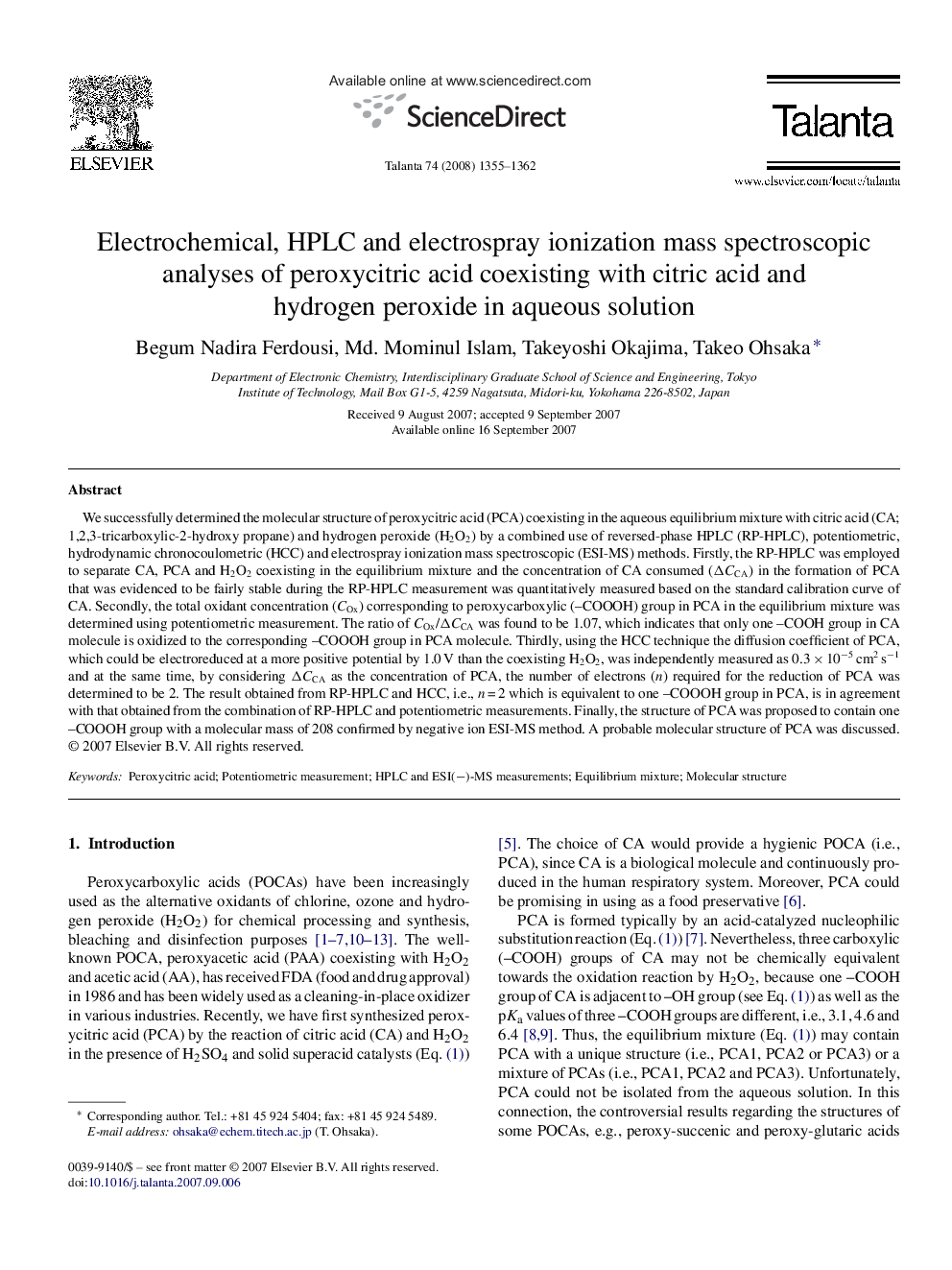| کد مقاله | کد نشریه | سال انتشار | مقاله انگلیسی | نسخه تمام متن |
|---|---|---|---|---|
| 1244527 | 969689 | 2008 | 8 صفحه PDF | دانلود رایگان |

We successfully determined the molecular structure of peroxycitric acid (PCA) coexisting in the aqueous equilibrium mixture with citric acid (CA; 1,2,3-tricarboxylic-2-hydroxy propane) and hydrogen peroxide (H2O2) by a combined use of reversed-phase HPLC (RP-HPLC), potentiometric, hydrodynamic chronocoulometric (HCC) and electrospray ionization mass spectroscopic (ESI-MS) methods. Firstly, the RP-HPLC was employed to separate CA, PCA and H2O2 coexisting in the equilibrium mixture and the concentration of CA consumed (ΔCCA) in the formation of PCA that was evidenced to be fairly stable during the RP-HPLC measurement was quantitatively measured based on the standard calibration curve of CA. Secondly, the total oxidant concentration (COx) corresponding to peroxycarboxylic (–COOOH) group in PCA in the equilibrium mixture was determined using potentiometric measurement. The ratio of COx/ΔCCA was found to be 1.07, which indicates that only one –COOH group in CA molecule is oxidized to the corresponding –COOOH group in PCA molecule. Thirdly, using the HCC technique the diffusion coefficient of PCA, which could be electroreduced at a more positive potential by 1.0 V than the coexisting H2O2, was independently measured as 0.3 × 10−5 cm2 s−1 and at the same time, by considering ΔCCA as the concentration of PCA, the number of electrons (n) required for the reduction of PCA was determined to be 2. The result obtained from RP-HPLC and HCC, i.e., n = 2 which is equivalent to one –COOOH group in PCA, is in agreement with that obtained from the combination of RP-HPLC and potentiometric measurements. Finally, the structure of PCA was proposed to contain one –COOOH group with a molecular mass of 208 confirmed by negative ion ESI-MS method. A probable molecular structure of PCA was discussed.
Journal: Talanta - Volume 74, Issue 5, 15 February 2008, Pages 1355–1362